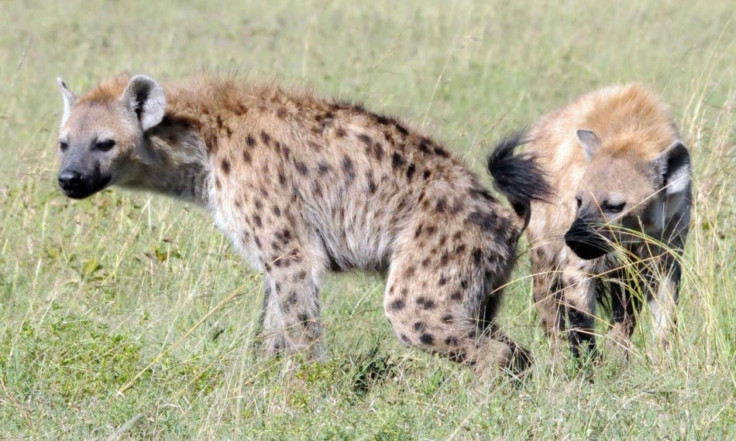Hyenas Pick Up Social Cues By Sniffing Bacteria-Laden Secretions

Hyenas might be well-known for laughing, but they have another way to communicate: bacteria-laden paste excreted from a special gland near the rectum.
In a paper published in the journal Scientific Reports on Thursday, Michigan State University researchers describe how distinct populations of bacteria thriving in the sour substance secreted by hyenas to mark their territory may be what allows them to recognize one another.
There's already a concerted effort to examine how internal microbial communities affect humans. But as MSU researcher and lead author Kevin Theis pointed out in a statement Thursday, animals probably rely on microbes just as much, if not more than humans, especially when scent is key.
"A critical component of every animal's behavioral repertoire is an effective communication system," lead author Kevin Theis said in a statement Thursday. "It is possible that without their bacteria, many animals couldn't 'say' much at all."
Spotted hyenas live in groups of 40 to 80, called clans. Clan members are loosely grouped, but will defend their territory against foreign hyenas. They mark their turf by secreting a substance called 'paste' from an anal gland, wiping it here and there on the grass.
When Theis and his colleagus put samples of hyena paste underneath a powerful electron microscope, they saw substantial populations of bacteria. Further analysis of the bacterial DNA revealed that the microbes in the secretion are involved in fermentation, and closely related to other bacteria well-known for making distinct odors.
Also, "these bacterial communities are more similar among hyenas from the same social group than among those from different groups," the authors wrote.
It's possible that a distinct bacterial community would then provide a distinct odor, allowing hyenas to easily discern what clan a marking hyena belongs to.
"The complex social lives of these animals may ultimately be reliant upon their unheralded symbiotic microbial communities," Theis said.
SOURCE: Theis et al. "Evidence for a bacterial mechanism for group-specific social odors among hyenas." Scientific Reports 2: 16, 30 August 2012.
© Copyright IBTimes 2025. All rights reserved.





















